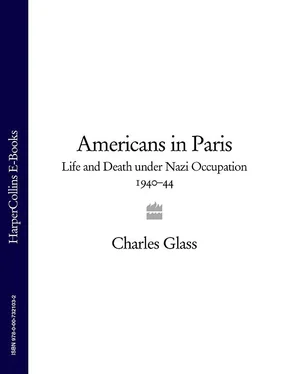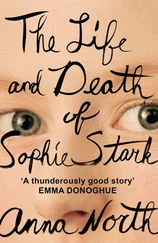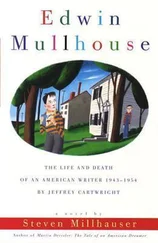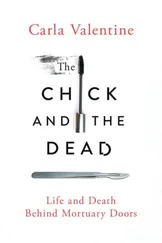The first American writer to patronize Shakespeare and Company was the formidable Gertrude Stein, who appeared in the shop on 16 March 1920 with her companion, Alice B. Toklas. Already a figure on the Paris scene, Stein had yet to achieve success in America. Her weekly salon, initiated in 1906, attracted Pablo Picasso and other artists, whose paintings she assiduously collected. In the 1920s, American writers in Paris, including Ernest Hemingway and Sherwood Anderson, sought her invitations. Stein became one of the Shakespeare and Company library’s original ‘bunnies’, as Sylvia called them, from the French word for subscriber, abonné . On 12 November 1920, 22-year-old Stephen Vincent Benét became the first young, aspiring American writer to join the library. Sylvia’s English competitors were Brentano’s bookshop for sales and the American Library of Paris for lending, both Right Bank institutions not favoured by the Left Bank bohemians. Brentano’s did not stock books by new writers or sell the experimental literary journals that Sylvia promoted. The blue-stockinged American Library matrons played moral censor, something Sylvia refused to do. When they removed H. L. Mencken’s journal, American Mercury , from their shelves, poet Ezra Pound, another of Sylvia’s American bunnies, wrote, ‘DAMN the right bank pigs, anyway.’ Shakespeare and Company became the haven of a new generation of writers and publishers. Most of its bunnies were students from the nearby University of Paris who, too poor to buy imported English books, paid the small subscription to borrow them.
In the summer of 1920, Shakespeare and Company reopened in a larger space at 12 rue de l’Odéon, facing Adrienne’s shop. Sylvia had two rooms just above Shakespeare and Company, but she did not live in them. She moved in with Adrienne at Number 8 and rented the rooms over the shop to pilgrims, as she called Americans arriving in Paris. Avant-garde American composer George Antheil lived there for several years. He used to climb up the front of the building to enter through a window rather than bother Sylvia by ringing at the shop. At the back, Sylvia kept a stove to brew tea and keep warm in winter. William Shirer, the great American journalist who was then working at the Paris Tribune , recalled how he ‘loved to browse among the shelves or be invited to tea in the back room, when in winter a fireplace blazed and there was much good talk’. Also at the back were children’s books, toys and a little red table. The outline of Odéonia was complete. It comprised the outdoor bookstalls in the arcades of the Théâtre de l’Odéon, the two bookshops, a music store, a library appraiser and, in the boulevard Saint-Germain, the writers’ favoured cafés, the Flore and the Deux Magots, and the Alsatian Brasserie Lipp.
Sylvia met James Joyce in July 1920. Joyce had just moved with his wife, Nora Barnacle, and their two children from Trieste. At the time, he was consumed with writing Ulysses . Sylvia, who had already read his short stories, later admitted, ‘Probably I was strongly attracted to Joyce as well as to his work, but unconsciously. My only love was Adrienne.’ When American courts convicted Margaret Anderson and Jane Heap of the Little Review for printing ‘obscene’ sections of Joyce’s Ulysses , American and British publishers refused to consider the book. Sylvia Beach hated censorship. ‘You cannot legislate against human nature,’ she said. Although she had never published anything, she came to Joyce’s rescue by publishing Ulysses . Adrienne’s French typesetters printed it, and Sylvia proofread every page. It went on sale in her shop, and she persuaded friends like Ernest Hemingway to smuggle copies into the United States. Her friend Janet Flanner called Sylvia ‘the intrepid, unselfish, totally inexperienced and little-moneyed young-lady publisher of “Ulysses” in Paris in 1922’. When the book appeared, Sylvia lost one of her first bunnies, Gertrude Stein. Miss Stein, who hated Joyce, took her custom to the American Library on the Right Bank.
Within six years of opening her shop, Sylvia Beach was called by Eugene Jolas, the American publisher of the Paris literary magazine transition , ‘probably the best known woman in Paris’. If she had any rival for that honour, it could only have been another American, the beautiful singer-dancer Josephine Baker. Sylvia made Shakespeare and Company the centre of Parisian American literary life. Ernest Hemingway, F. Scott Fitzgerald, Thornton Wilder, John Dos Passos, Elliot Paul, Malcolm Cowley and other expatriate American writers used her combined bookshop-lending library as, in Janet Flanner’s words, ‘their club, mail drop, meeting house and forum’. Over tea at Shakespeare and Company, the Americans met the Irishman James Joyce and French writers like Louis Aragon and André Breton, as well as one another. It was a time of high living for the Americans, who found Paris cheaper than home and loved the freedom to write without censorship and to drink alcohol without being arrested. Aged 22, Hemingway fell in love, however platonically, with 34-year-old Sylvia the moment they met in 1921. ‘She had pretty legs and she was kind, cheerful and interested, and loved to make jokes and gossip,’ Hemingway wrote of her in his Paris memoir, A Moveable Feast . ‘No one that I ever knew was nicer to me.’ He made a point of taking her to boxing matches to shake her further from her Protestant clerical upbringing. She became an enthusiast and introduced Hemingway to French writer Jean Prévost, who wrote a book called The Pleasure of Sport and matched Hemingway’s physicality. The two men sparred in the ring, but Prévost’s head was so hard that Hemingway broke a thumb on it. Sylvia adored Hemingway, encouraging the young journalist to publish in Paris’s growing number of literary periodicals.
The Twenties bounty turned, for Sylvia as for much of the western world, into Thirties desperation. The dollar’s devaluation slashed the incomes of expatriate Americans – impoverished writers, painters and composers most of all. Ernest Hemingway and her other favourites left Paris for the United States. In December 1933, restrictions on drinking and writing that had driven many American writers to France were lifted with the repeal of Prohibition and the American publication of Joyce’s Ulysses . Judge John Woolsey of the US District Court in New York wrote the landmark decision that Ulysses , despite its sexual content, was a ‘sincere and honest book’. He famously added, ‘His locale was Celtic and his season spring.’ This was good news for Joyce, whose book sold 35,000 copies in three months, but it came at a cost to Sylvia. Joyce had convinced her, after her years of subsidizing him and keeping his book in print, to relinquish publishing rights to Random House in New York and the Bodley Head in London. Her health, plagued since childhood by eczema and migraines, suffered. The writer Katherine Anne Porter recalled ‘attacks of migraine that stopped her in her tracks’. Lack of business in Depression-era Paris put her deeper into debt. Her family helped when it could – small amounts arriving in their letters from Princeton and California. But the presents were not enough to protect Shakespeare and Company from bankruptcy.
When Sylvia told André Gide in 1935 that the shop might close, he declared, ‘But something must be done!’ Thanks to Gide and fellow writers Jean Schlumberger and Paul Valéry, something was. They created the Friends of Shakespeare and Company, whose members paid dues for two years to support the shop. Almost all of France’s best writers contributed. André Maurois, Jean Paulhan, Jules Romains and Georges Duhamel headed a long list of donors who paid a minimum of $45 a year to attend readings by French and American novelists and poets. The poet Archibald MacLeish sent $75. The largest donation came from Sylvia’s childhood friend, Carlotta Welles Briggs, with whom she had spent summers at the Welles’s country house near Bourré in the Touraine.
Читать дальше












